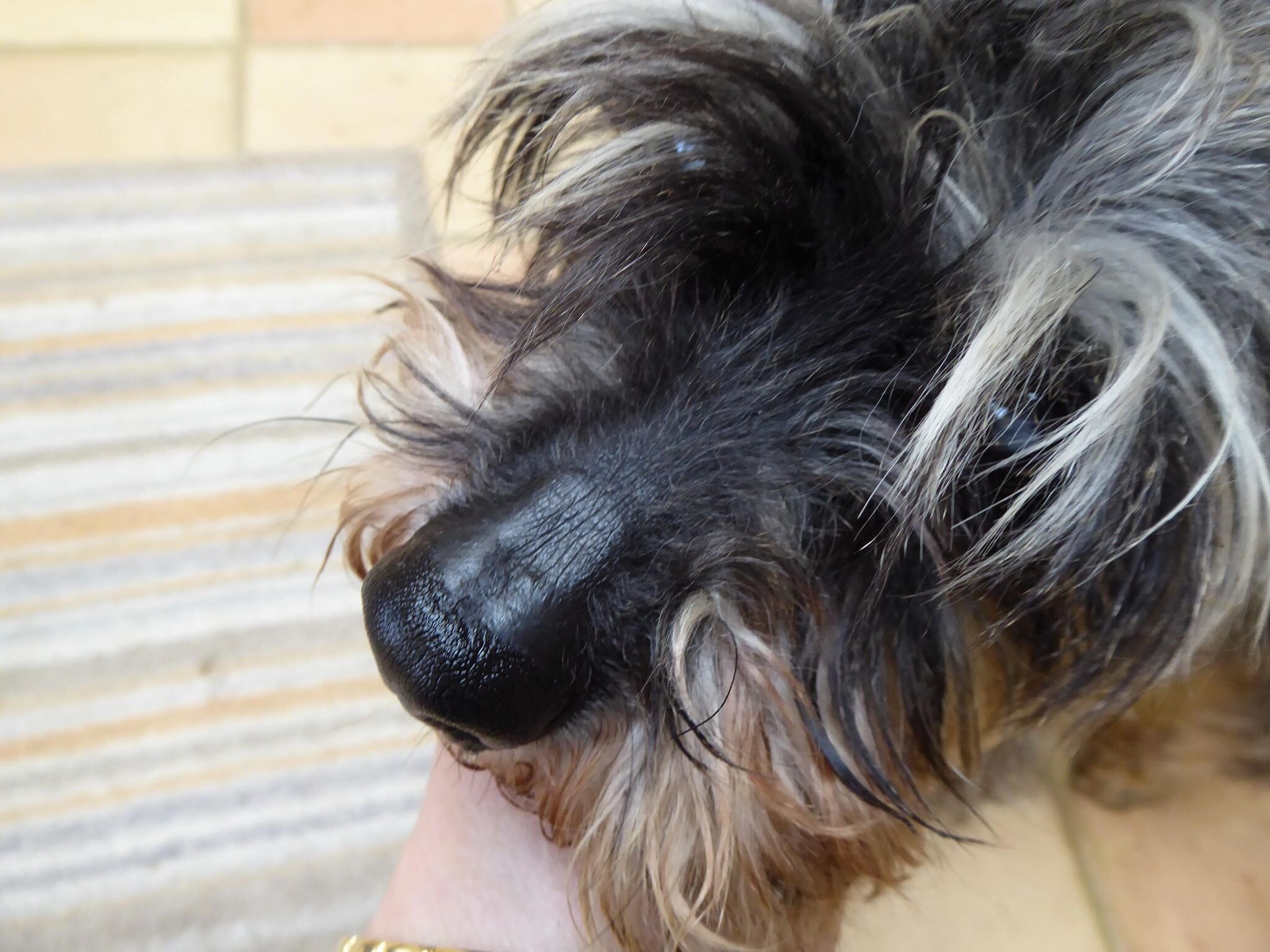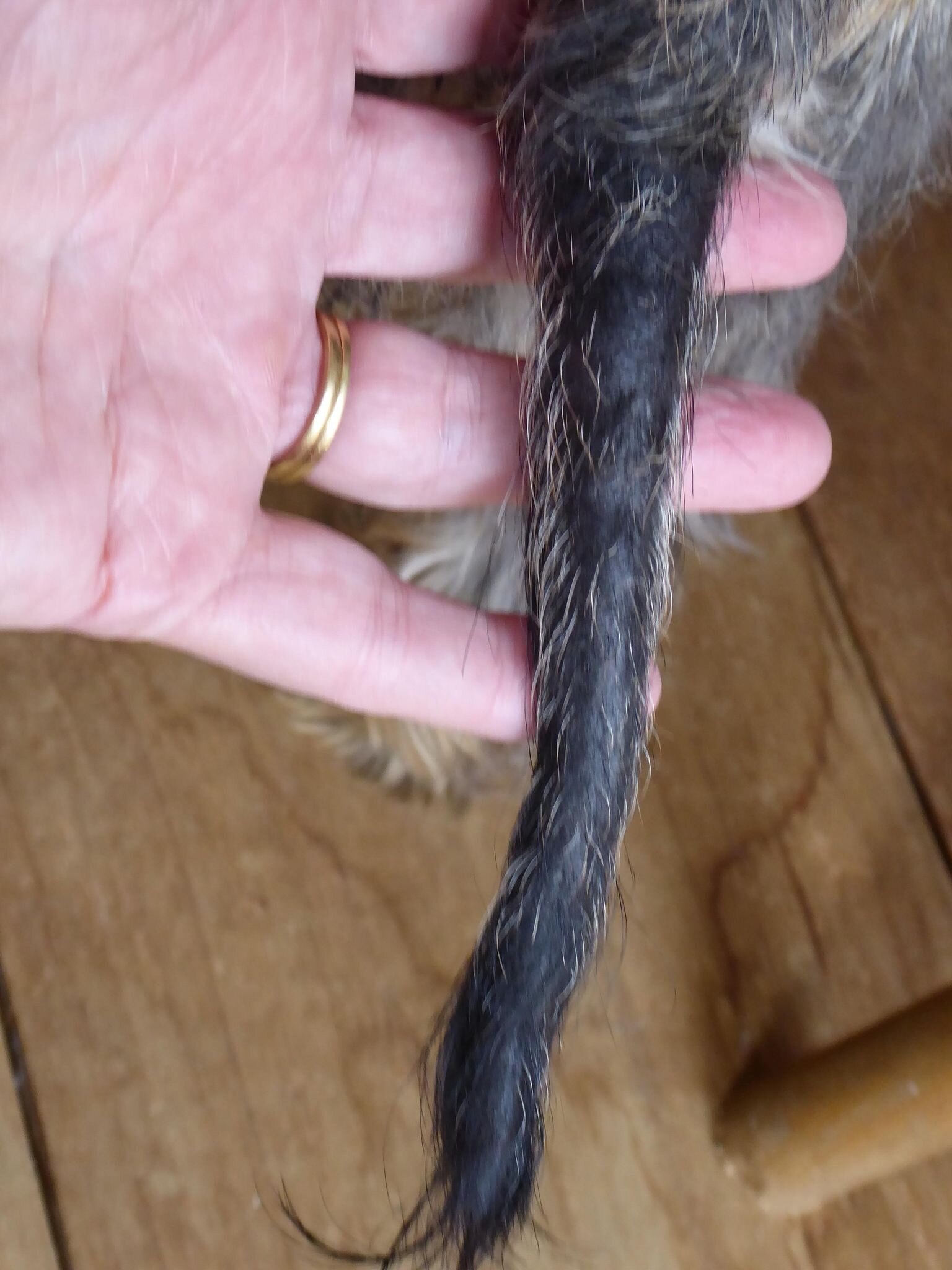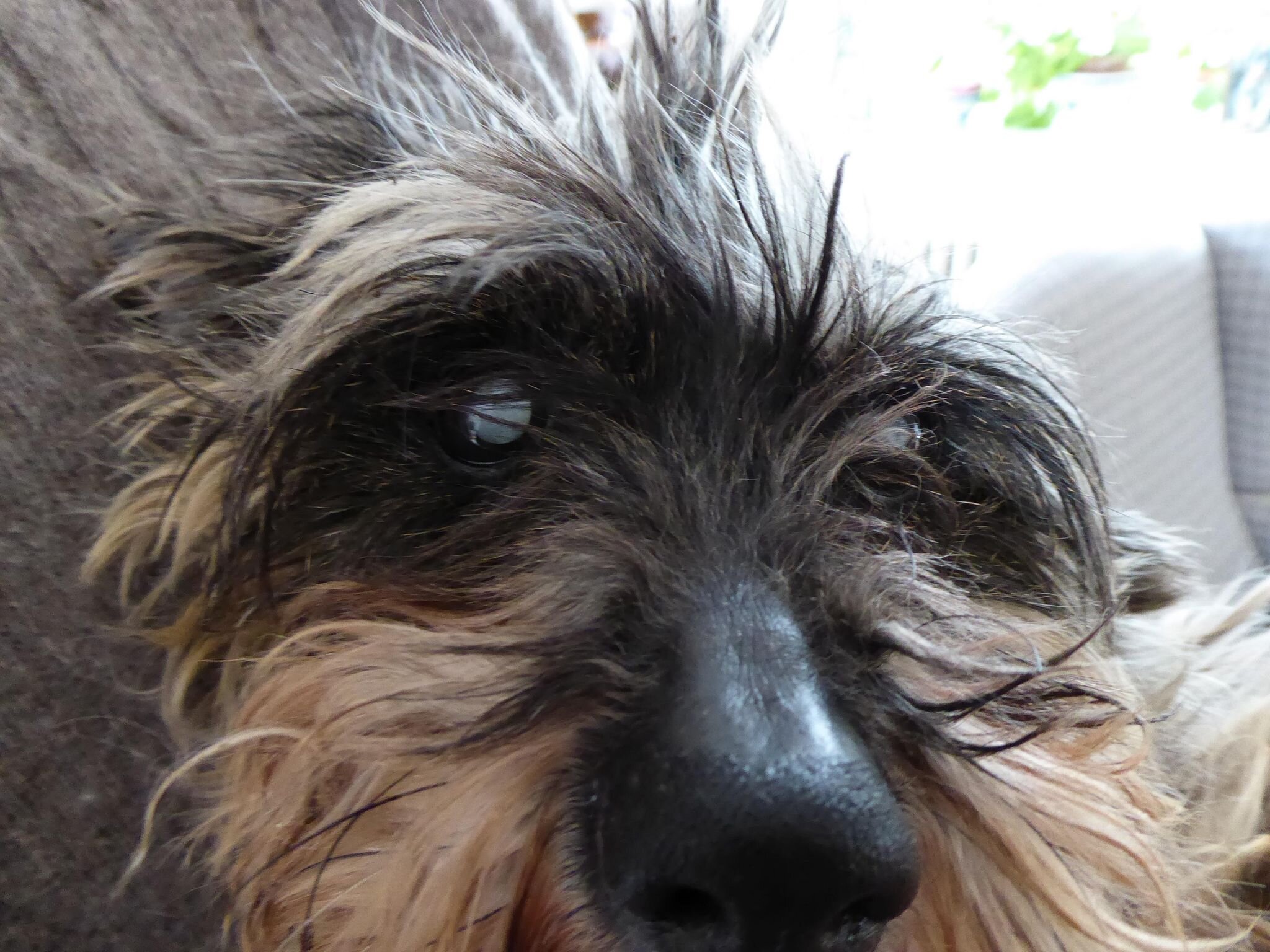It isn’t known exactly how long Dido lived in a breeding facility a.k.a puppy farm. Her age is estimated to be 8-10. Nor is it known how many litters she had in those lost years but what is clear is that she was not cared for. When rescued she displayed common signs of having been extensively bred from while being neglected: extensive hair loss, missing teeth and anxiety around humans. Her ears are permanently damaged from repeated, untreated infections.
The good news for Dido is that her wariness of people is less crippling than for many from bad backgrounds. In the weeks she has been living in her new home, it’s reduced greatly and her innate desire to be loved and to receive loving, caring physical contact overrides the wariness.
A major problem that’s resulted from her previous existence is blindess. Dido has hypermature cataracts in both eyes and therefore limited vision. The breeder who kept her in a state of neglect would have known she had eye issues and chose to continue breeding from her, leaving the cataracts untreated.
Dido has been adopted by Camilla, a Schnauzerfest Trustee. Camilla is used to living with ex-breeding dogs with limited eyesight. In 2015 she adopted Mabel who had one eye removed and a cataract in the remaining one. Sadly Mabel died in January 2021. Dido’s canine siblings, Archie and Isla welcomed her into their home and life without hesitation and in the weeks they have been together, the trio have become firm friends. Resident dogs are the best teachers for dogs from backgrounds like Dido’s and even more important for a blind dog.
Isla and Dido
Dido has seen the ophthalmologist and the great news is that she is a good candiate for double cataract surgery. If successful - there are no guarantees - regaining her vision will transform Dido’s new life. One where she has already made startling progress to being a happy, loving dog eager to get the most out of each day. All Dido’s treatment will be paid for privately with no charity funds being used.
We look forward to documenting and sharing her journey through the forthcoming surgery, recovery and her wonderful future with Camilla and family.
JULY 2021 UPDATE
Dido’s bilateral cataract surgery went ahead and has been successful. As Dido lives with a Schnauzerfest Trustee, we’ll provide a detailed account of the procedures involved and the regime that needed to be followed for Dido after her surgery. It illustrates the commitment that’s required for all involved. Thankfully Dido’s treatment has been straightforward, at any point along the way complications can occur for dogs undergoing this specialist treatment.
The operation
A lens was put into her left eye but not the right as the capsule was too damaged. The cataracts were hypermature with the nuclei described as being like stone. Each cataract took an hour to remove. They had been there for many years which complicated matters considerably.
On Discharge
Eye drops - ten minutes between each set of drops
Anti-inflammatory: one drop to both eyes twice daily. Plus a different anti-inflammatory: one drop to both eyes six times daily.
Antibiotics: one drop to both eyes four times daily.
Artificial tears: one drop to both eyes four times daily.
Oral
Antibiotics: half a tablet twice a day
Anti-inflammatory: three quarters of a tablet twice a day.
Dido in the car, pre-op.
Dido was discharged with a cone. She had to be taken into the garden to wee on a lead which was difficult as she rarely went - perhaps because her nose couldn’t touch the ground so the smell-to-nose-to-bladder connection was broken. She managed about once a day. As a dog who until recently had lived in a breeding facility (aka puppy farm), Dido would have learned to cope with all manner of discomfort.
After one week
Eye drops - ten minutes between each set of drops
Anti-inflammatory: one drop to left eye four times daily - left eye was slightly more inflamed as it had had a new lens, the right eye was twice daily.
Further anti-inflammatory: one drop to both eyes four times daily.
Artificial tears: one drop to both eyes x4 daily
At this point, the cone was no longer required and Dido was free to wee at leisure!
After four weeks
Eye drops - ten minutes between each set of drops
Anti-inflammatry one drop to both eyes twice daily, reducing to once daily after a month, plus the additional anti-inflammatory one drop to both eyes three times daily, reducing to twice daily after a month to once daily.
Artificial tears one drop to both eyes twice daily.
Dido had her check up this week and all is great, so she will go back now in three months.
Dido has been exceptionally lucky with a straightforward recovery. She had an ulcer on each eye immediately after surgery which is very common and they were treated with medication which was kept in place with a contact lens. There can often be problems with eye pressure and she was sent home with drugs for this just in case.
Great care was needed to ensure that she didn’t scratch her eyes in any way by accident, particularly in the garden. At the four week check up as everything was healed, Camilla was given the all clear to treat Dido normally.
Lifetime care
Dido will be on eye drops for life. She is very good about having the drops put in, coming for them each time.
“We could not be more proud of her. There are no words to describe how wonderful it is to see the transformation from a blind to a sighted dog. It makes every eye drop worthwhile.”








